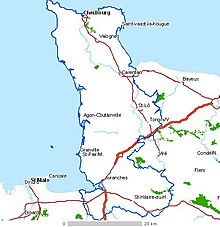엔카리나에
N Carinae| 관측 데이터 Epoch J2000.0 이쿼녹스 J2000.0 | |
|---|---|
| 별자리 | 카리나 |
| 우측 상승 | 06h 34m 58.57993s[1] |
| 탈위임 | −52° 58′ 32.1919″[1] |
| 겉보기 크기 (V) | 4.35[2] |
| 특성. | |
| 스펙트럼형 | A0II[3] 또는 B9III[4] |
| B-V색지수 | −0.021±0.016[2] |
| 아스트로메트리 | |
| 방사 속도 (Rv) | +22.5±0.5km[2]/s |
| 고유 운동 (μ) | RA: -7.65[1]mas/yr Dec.: +10.54[1]mas/yr |
| 시차 (π) | 2.39 ± 0.13[1] 마스 |
| 거리 | 1,360 ± 70 리 (105 ± 20 pc) |
| 절대치수 (MV) | −3.75[2] |
| 세부 사항 | |
| 미사 | 7.9±0.2[5] M☉ |
| 반지름 | 3.6[6] R☉ |
| 루미도 | 3,411.35[2] L☉ |
| 온도 | 8,004[7] K |
| 회전 속도 (v sin i) | 47km[8]/s |
| 나이 | 37.4±4.2[5] 마이어 |
| 기타 지정 | |
| 데이터베이스 참조 | |
| 심바드 | 자료 |
N 카리나에(N Carinae)는 저명한 별 카노푸스의 북동쪽에 있는 카리나 별자리에 있는 단일[10] 별이다.이 물체는 흰색을 띠며 육안으로는 4.35의 가시적 크기로 희미하게 보인다.[2]시차를 바탕으로 태양으로부터 약 1,360광년 거리에 위치한다.[1]절대폭은 -3.75이며,[2] 반경 속도 +22.5 km/s로 더 멀리 떠내려가고 있다.[2]
이 물체는 거대한 밝은 거성과 일치하는 A0II라는 별의 분류를 가지고 있다.[3]과거에 그것은 B9의 수업을 받았었다.때때로 여전히 사용되는 III.[4][5]이 별은 3700만년 된 것으로 태양의 7.9배 질량이다.[5]47km/s의 예상 회전 속도로 회전하고 있다.[8]N캐리네는 광권으로부터 태양의 3,411배의[2] 광도를 8,004K의 유효온도로 방사하고 있다.[7]
참조
- ^ a b c d e f van Leeuwen, F. (2007), "Validation of the new Hipparcos reduction", Astronomy and Astrophysics, 474 (2): 653–664, arXiv:0708.1752, Bibcode:2007A&A...474..653V, doi:10.1051/0004-6361:20078357, S2CID 18759600.
- ^ a b c d e f g h i Anderson, E.; Francis, Ch. (2012), "XHIP: An extended hipparcos compilation", Astronomy Letters, 38 (5): 331, arXiv:1108.4971, Bibcode:2012AstL...38..331A, doi:10.1134/S1063773712050015, S2CID 119257644.
- ^ a b Houk, Nancy (1978), Michigan catalogue of two-dimensional spectral types for the HD stars, vol. 2, Ann Arbor: Dept. of Astronomy, University of Michigan, Bibcode:1978mcts.book.....H.
- ^ a b Eggen, O. J. (1962), "Space-velocity vectors for 3483 stars with proper motion and radial velocity", Royal Observatory Bulletin, 51, Bibcode:1962RGOB...51...79E.
- ^ a b c d Tetzlaff, N.; et al. (January 2011), "A catalogue of young runaway Hipparcos stars within 3 kpc from the Sun", Monthly Notices of the Royal Astronomical Society, 410 (1): 190–200, arXiv:1007.4883, Bibcode:2011MNRAS.410..190T, doi:10.1111/j.1365-2966.2010.17434.x, S2CID 118629873.
- ^ Pasinetti Fracassini, L. E.; et al. (February 2001), "Catalogue of Apparent Diameters and Absolute Radii of Stars (CADARS)", Astronomy and Astrophysics (Third ed.), 367 (2): 521–524, arXiv:astro-ph/0012289, Bibcode:2001A&A...367..521P, doi:10.1051/0004-6361:20000451, S2CID 425754.
- ^ a b McDonald, I.; et al. (2012), "Fundamental parameters and infrared excesses of Hipparcos stars", Monthly Notices of the Royal Astronomical Society, 427: 343–357, arXiv:1208.2037, Bibcode:2012MNRAS.427..343M, doi:10.1111/j.1365-2966.2012.21873.x, S2CID 118665352.
- ^ a b Royer, F.; et al. (January 2002), "Rotational velocities of A-type stars. I. Measurement of v sin i in the southern hemisphere", Astronomy and Astrophysics, 381: 105–121, arXiv:astro-ph/0110490, Bibcode:2002A&A...381..105R, doi:10.1051/0004-6361:20011422, S2CID 13133418.
- ^ "N Car". SIMBAD. Centre de données astronomiques de Strasbourg. Retrieved 2020-02-12.
- ^ Eggleton, P. P.; Tokovinin, A. A. (September 2008), "A catalogue of multiplicity among bright stellar systems", Monthly Notices of the Royal Astronomical Society, 389 (2): 869–879, arXiv:0806.2878, Bibcode:2008MNRAS.389..869E, doi:10.1111/j.1365-2966.2008.13596.x, S2CID 14878976.


